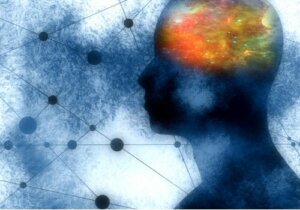Three Striking Functions of Mirror Neurons

The functions of mirror neurons continue to surprise the neuroscientists who study them. Studies show that they influence learning and are a factor in our emotions and our social life.
The findings continue to amaze the scientists in this area of study. One of the most advanced fields in this area of study concerns the functions of neuro mirrors. In principle, these neurons reflect “inside” what we see on the outside. For that reason, they’re called mirrors.
However, as progress has been made on the subject, new functions of mirror neurons have appeared. This possibility of reflecting the external in the internal causes an impact on a whole set of behaviors, both intellectual and social.
The most interesting aspect is that science has demonstrated that mirror neurons go into action when someone goes into action. This means that it seems that one was doing the action. We’ve just begun to explore them but we already know about the three functions of mirror neurons. They’re the following:
“We’re social creatures. Our survival depends on understanding the actions, intentions, and emotions of others. Mirror neurons allow you to understand the mind of others. This isn’t only through conceptual reasoning but through direct simulation. This means feeling, not thinking.”
-G. Rizzolatti-

1. Learning, one of the functions of mirror neurons
Francisco Mora is a professor of human physiology at the Faculty of Medicine at the Complutense University of Madrid. The results of his study of mirror neuron functions are in a book entitled Neuro Education. In this report, he raises several interesting points about the relationship between these neurons and learning.
In his book, Mora cites two revealing experiments. For instance, in the first one, he hired an actor to teach classes. Consequently, these classes had a great amount of emotional content, similar to a theatrical production. However, there was very little academic content. In the end, he asked the students to evaluate the professor and all of them left excellent reviews.
Next, in the other experiment, he asked the students to evaluate the professors in the books. As a result, students gave a better evaluation for the ones that presented their classes with mostly emotional content. In this case, as in the previous case, he found that the more emotional practices activated more mirror neurons.
2. They help to identify the intentions of others
The anticipation of the thoughts and intentions of others has to do with the so-called theory of mind. There are two positions on this subject. One says that children develop this capacity in childhood, a stage in which you build a sort of theory about what others are thinking. In contrast, the other position states that this capacity develops throughout life, as we observe and contrast the actions of others.
Experts have discovered that one of the functions of mirror neurons is to activate this ability to anticipate the thoughts, feelings, and intentions of others. As a result, this type of neuron eliminates the barrier between the self and others. That’s the reason why they activate this function.
The neuron mirrors are “the neurons of social life”. They facilitate the understanding of the other. So much so that there’s evidence that these types of neurons have very limited activity in those suffering from autism, for example.

3. The pillars of empathy
The main function of mirror neurons is empathy. Actually, in some ways, this is implicit in the previously mentioned functions. We define this as the ability to put yourself in the place of another person. There’s a kind of identification that allows you to reflect the world of that other person within yourself. As if what the other person feels or experiences, you also feel or experience.
At first, experts thought that mirror neurons only reflected the motor behavior of others. However, scientists such as Marco Lacoboni, from the University of California, discovered that people carry out this projection with emotions and attitudes.
This affirms that people only need a few days of life to understand and identify expressions of pleasure and anger in a person’s face. If someone smiles at a baby, that smile will have a place in their limbic system. At the same time, this happens with expressions of rejection. In short, the main function of mirror neurons is for people to connect with each other.
The functions of mirror neurons continue to surprise the neuroscientists who study them. Studies show that they influence learning and are a factor in our emotions and our social life.
The findings continue to amaze the scientists in this area of study. One of the most advanced fields in this area of study concerns the functions of neuro mirrors. In principle, these neurons reflect “inside” what we see on the outside. For that reason, they’re called mirrors.
However, as progress has been made on the subject, new functions of mirror neurons have appeared. This possibility of reflecting the external in the internal causes an impact on a whole set of behaviors, both intellectual and social.
The most interesting aspect is that science has demonstrated that mirror neurons go into action when someone goes into action. This means that it seems that one was doing the action. We’ve just begun to explore them but we already know about the three functions of mirror neurons. They’re the following:
“We’re social creatures. Our survival depends on understanding the actions, intentions, and emotions of others. Mirror neurons allow you to understand the mind of others. This isn’t only through conceptual reasoning but through direct simulation. This means feeling, not thinking.”
-G. Rizzolatti-

1. Learning, one of the functions of mirror neurons
Francisco Mora is a professor of human physiology at the Faculty of Medicine at the Complutense University of Madrid. The results of his study of mirror neuron functions are in a book entitled Neuro Education. In this report, he raises several interesting points about the relationship between these neurons and learning.
In his book, Mora cites two revealing experiments. For instance, in the first one, he hired an actor to teach classes. Consequently, these classes had a great amount of emotional content, similar to a theatrical production. However, there was very little academic content. In the end, he asked the students to evaluate the professor and all of them left excellent reviews.
Next, in the other experiment, he asked the students to evaluate the professors in the books. As a result, students gave a better evaluation for the ones that presented their classes with mostly emotional content. In this case, as in the previous case, he found that the more emotional practices activated more mirror neurons.
2. They help to identify the intentions of others
The anticipation of the thoughts and intentions of others has to do with the so-called theory of mind. There are two positions on this subject. One says that children develop this capacity in childhood, a stage in which you build a sort of theory about what others are thinking. In contrast, the other position states that this capacity develops throughout life, as we observe and contrast the actions of others.
Experts have discovered that one of the functions of mirror neurons is to activate this ability to anticipate the thoughts, feelings, and intentions of others. As a result, this type of neuron eliminates the barrier between the self and others. That’s the reason why they activate this function.
The neuron mirrors are “the neurons of social life”. They facilitate the understanding of the other. So much so that there’s evidence that these types of neurons have very limited activity in those suffering from autism, for example.

3. The pillars of empathy
The main function of mirror neurons is empathy. Actually, in some ways, this is implicit in the previously mentioned functions. We define this as the ability to put yourself in the place of another person. There’s a kind of identification that allows you to reflect the world of that other person within yourself. As if what the other person feels or experiences, you also feel or experience.
At first, experts thought that mirror neurons only reflected the motor behavior of others. However, scientists such as Marco Lacoboni, from the University of California, discovered that people carry out this projection with emotions and attitudes.
This affirms that people only need a few days of life to understand and identify expressions of pleasure and anger in a person’s face. If someone smiles at a baby, that smile will have a place in their limbic system. At the same time, this happens with expressions of rejection. In short, the main function of mirror neurons is for people to connect with each other.
All cited sources were thoroughly reviewed by our team to ensure their quality, reliability, currency, and validity. The bibliography of this article was considered reliable and of academic or scientific accuracy.
- Iacoboni, M. (2009). Las neuronas espejo: empatía, neuropolítica, autismo, imitación, o de cómo entendemos a los otros (Vol. 3055). Katz editores.
This text is provided for informational purposes only and does not replace consultation with a professional. If in doubt, consult your specialist.







